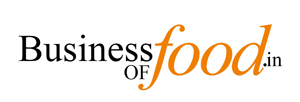The growth rate for private labels since 2016 is 2x and stands at a remarkable 38% as against a 19% CAGR for organized retail market growth in India.
Every consumer would have come across products that retailers refer to as private label products. They may or may not know the term but it would not be an exaggeration to say that probably every consumer has sampled a private-label product in some form or the other. Let me explain this better.
A “private label” product is a retailer’s own brand, sold under the retailer’s own name in its chain of stores. They are also known as “house brands”, “store brands”, “in-house brands” or “own brands”.
These brands may or may not be manufactured by the retailer but are almost always sold exclusively only within the retailer’s store chain – offline and online. Usually, the manufacturing is done by third-party manufacturers as per the retailer’s specifications and quality control guidelines and marketed under the retailer’s brand name. The product may carry the retail chain name as in the case of “Reliance Select” or it may carry a completely new brand name like a “Snactac” or “Good Life”, both of which are in-house brands of Reliance Retail, as is Reliance Select.
The private-label brands will always be cheaper than the leading National brands in the same segment. The price variance can range from 20% to 50%. Quality is claimed to be equivalent or better than the National brands. You can probably now guess why there is a tilt in consumer preference towards private-label brands when they shop at any retail chain.
While significantly lower prices for similar to better quality is a motivator for consumers, why do retailers push their private-label agenda so much? If you ask any retailer this question, the top-of-mind answer you will get is most likely that private-label products give retailers far higher margins than the National or Regional brands do. The incremental margins can be 40% to more than 100%, depending on the categories. But are better margins translating to better bottom lines the only reason why retailers have become so aggressive in their private-label program?
Key reasons behind the boom in private-label brands in India
1. A private label has significantly higher margins as mentioned above.
2. A private label or store brand is a smart way to cultivate customer loyalty or customer stickiness in a world of homogeneity. When there is a proliferation of retailers, all looking to grab the same customer segment, what is the differentiation a retailer can offer? If a customer is satisfied with the private-label offering by a retail chain, then he/she would frequent that specific retailer more as against, say, buying a national brand product in the same segment that he/she would be able to buy across any retail store.
3.Better assortment, especially in niche segments. There are some segments that have an over proliferation of brands and some otherwise. It is a great opportunity for retailers to look at plugging a house brand in the under-penetrated segment to win over customers and get a differentiating edge over competition. For example, in whole spices segment, one will find the standard spices of coriander, cumin, mustard seeds under a retailer’s private label, but it would be difficult to find a regional spice mix like “Panch-Photan” (Eastern India favorite) in a private label portfolio.
4. A private label gives a retailer more control over the supply chain and ensures better shelf availability. This assumes even higher significance for larger retailers with rapid expansion plans that go beyond the traditional supply chain penetration grid.
5. An unstated but critical reason is the negotiating edge that private labels can provide a retailer with their vendor partners. Negotiation is finally all about power and when brands know that they are not indispensable, they will be more amenable to terms that are favorable for the retailer. There… I think, I just stated an open secret in bold print!
6.Higher margins gain even more significance when it comes to online players. While they incur significantly higher customer acquisition costs and high supply-chain costs, they are able to get extremely high rate of returns. Online players are therefore betting on increasing the share of their private-label products for a healthier margin mix in order to shore up their bottom line.
Consumer perception of private label in India
I have already spoken about the economic benefit for consumers buying private label. During economic downturns and crisis times, consumers the world over have been seen veering more towards private-label products. The recent pandemic established this even more by accelerating buying behavior that favored private-label brands. Post-pandemic, the trend continues and is here to stay.
As per a report by KPMG and industry body Retailers Association of India (RAI), the growth rate for private labels since 2016 is 2x and stands at a remarkable 38% as against a 19% CAGR for organized retail market growth in India.
How do retailers push private label agenda
With retailers treating their private-label agenda as top priority, there are multi-prong strategies in place to ensure higher visibility and propensity to purchase store brands. Retailers are leaving no stone unturned in pushing their private-label agenda.
Stores give disproportionate visibility and focus to own-label products, ensuring that consumers’ notice these products more. Not only is the on-shelf visibility higher, stores give multiple display points to their own labels so that customers have higher OTS or opportunity to see and therefore buy. For example, a private-label jam display will be done in the “processed food” section along with other jams but with more “facings” or visibility on the shelf. It may also be displayed near the cash till for “impulse purchase” or near the Bread section for inducing complementary purchase
→Private-label products have constant promotions, despite already being cheaper. This makes a value-for-money product even more attractive. Private-label products are often sold as bundled promotions i.e., product A+B at a very attractive price. This helps increase the product penetration of both private-label products A and B.
→In store, store staff is given incentives to push private-label products. There is subtle and sometimes blatant sales push done by the store staff for private-label products. They are given target-driven incentives and hence push the products with enthusiasm.
→Online retailers ensure visibility for own label is higher with “injection banners” and app algorithms favoring private-label brands. Next time you search for say, “basmati rice” on an online retail site, check out the brand that appears first! Also notice the banner ads.




